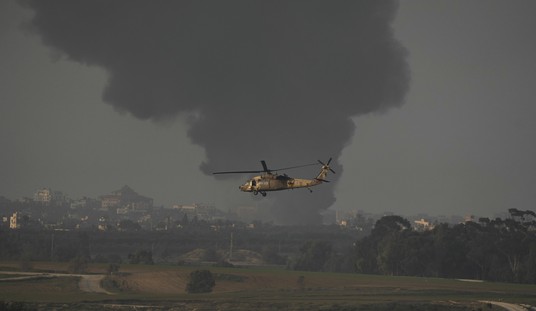North Korea's successful test of its long-range multistage Unha-3 ballistic missile demonstrated that the U.S. West Coast may soon be within range of Pyongyang's warheads.
North Korea's nuclear and ballistic missile theatrics are no longer getting the same reaction from its more immediate target audiences, however: South Korea and Japan. Japan had promised to intercept Pyongyang's test missile should it intrude on Japanese territory. It didn't, so Japan's impressive missile defense system did not see action. Japan, however, has committed itself to intercepting any future North Korean missile or missile fragments that fall on its territory.
Pyongyang utterly disregarded the threat of international sanctions. That's a bit ironic, since threat is Pyongyang's only game. The threat of igniting a scorched-earth war that reduces Seoul and Tokyo to cinders (and thus sends the entire global economy into a depression) is starving North Korea's only diplomatic leverage.
South Korea has dealt the North overwhelming economic, social and cultural defeats. Seoul's skyline and ubiquitous products attest to South Korea's economic success.
North Korea's propagandists have nothing to peddle, so they have turned missile and nuclear tests into highly ritualized theatrical productions. The opening scenes involve missile rollout, accompanied by claims that the missile will place a peaceful communications satellite in orbit. This phase is the rough equivalent of a melodrama's villain opening his cloak and displaying his dagger, which he claims, of course, is only used to trim his mustache.
Recommended
Then the dagger-missile is raised. A long launch window maximizes otherwise dismal North Korea's moment in the international media spotlight. This test launch more or less followed the script.
For almost two decades, North Korea's Kim dynasty ran a reasonably successful extortion racket based on the theory that South Korean, Japanese and American leaders would appease the hereditary dictatorship rather than accept the material, moral and global economic risks a war in East Asia entails. The Kim mob's crude bargain has been, "Give us food and fuel, and we won't kill a bunch of people."
Over the last three to four years, however, South Korea and Japan have sent strong signals that appeasement is over. Mainstream Japanese politicians openly discuss acquiring offensive weapons as a means of combating North Korea's missile threat.
After North Korea sank the South Korean warship Cheonan in March 2010, the outraged South Korean government demanded reparations. Later that year, then-South Korean President Lee Myung-bak proposed establishing a Korean reunification fund that over the next few decades would have the $1 to $2 trillion it will take to rebuild North Korea once it collapses and the South absorbs it.
In 1988, Japan was already thinking about defensive systems designed to counter North Korean or, potentially, Chinese missiles. That year, Japan decided to build the Kongo-class destroyer and arm it with U.S. Aegis radars and Standard antiballistic missiles (ABMs). Japan began constructing an early warning radar system and later acquired land-based Patriot PAC-3 ABMs.
Today, Japan sports a sophisticated "thin shield" missile defense system capable of intercepting incoming missiles at both high (upper-tier, with the Standard-3) and low (Patriot PAC-3) altitudes.
Japan built the system without fanfare.
That has changed. Japan now publicly touts the defensive system and promises to use it. This test launch marks the third in a row where the Japanese government ordered its defense forces to use ABMs to intercept the North Korean missile or any missile debris that is heading for Japanese territory.

























Join the conversation as a VIP Member